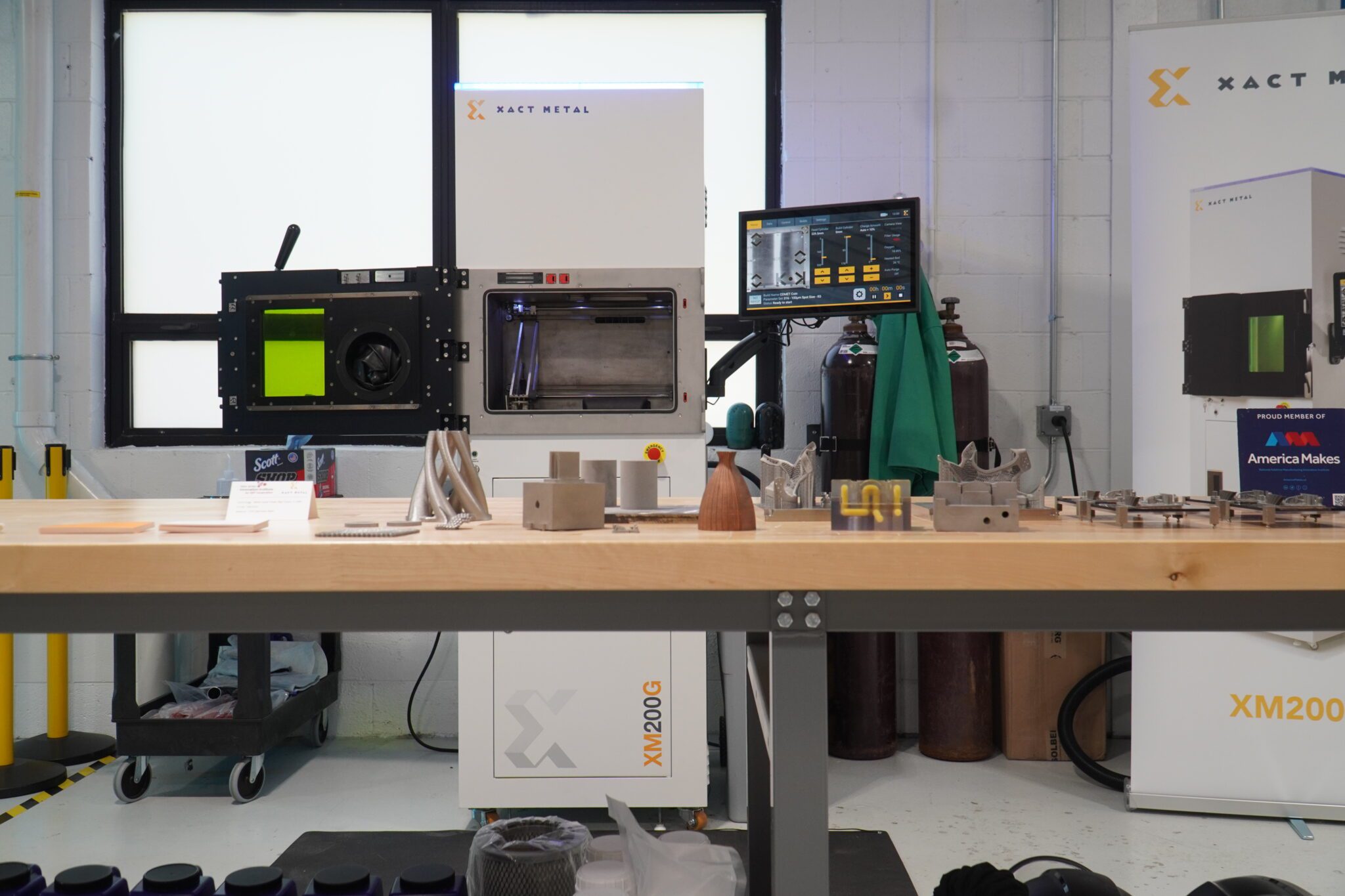One of the promises of additive manufacturing (AM) is that the process parameters can be changed to accommodate a wide range of metal alloys. However, getting started can be daunting. Typically, researchers will start by using process parameters that were successful on another alloy with a similar composition. The question though is, “What happens if that fails spectacularly?”
Over the past decade, DEVCOM-AC and New Jersey Institute for Technology (NJIT) researchers have relied on a concept called volumetric energy density (VED) to help set boundaries on which parameters to change to optimize the density of a new metal. The VED relies on the laser power (Watts), laser scan speed (mm/s), hatch distance (mm) and layer thickness (mm) to calculate how much energy is going into melting the metal alloy within the AM machine, shown below.
| VED = P/vhd |
| P= laser power, Watts |
| v = laser scan speed, mm/s |
| h = hatch distance, mm |
| d = layer thickness, mm |
Within the VED construct, if a researcher is limited to having only 1 laser power setting it is still possible for them to vary the VED by changing the laser scan speed (v) or hatch distance (h). This helps to increase or decrease energy within a certain volume using available equipment.
Once the variations in process parameters have been selected for the design of experiments (DOE), building parts can begin. To save money on powder, it is recommended that a few small cubes (~15mm – 20mm) be built in various points on the build plate to show the dependency of location.
Once the cubes have been produced and removed from the build plate, obvious defects such as delamination should be noted. Typically, but not always, if the process parameters do not work well for small cubes they will not work well for larger parts. However, for cubes that remain intact more investigation needs to be done to determine which process parameters produced cubes with the highest relative density. Density can be measured using the Archimedes Principle or by visually inspecting polished metallurgical specimens and checking for porosity.
Running this DOE several times can confirm the consistency of the results. Once a researcher is satisfied, the next step would be to produce larger specimens which are properly heat treated to commence other physical and mechanical testing.
Interested in learning more about how to use Volumetric Energy Density for AM process optimization with NJII Defense? Contact one of our experts today!
References
Jelis, E., Hespos, M.R., Feurer, M. et al. Development of Laser Powder Bed Fusion Processing Parameters for Aermet 100 Powder. J. of Materi Eng and Perform 32, 7195–7203 (2023). https://doi.org/10.1007/s11665-022-07638-y
